Research of the Disparities in the Process of Revitalization of Brownfields in Small Towns and Cities
Abstract
1. Introduction
2. Materials and Methods
- cognitive: represents an overview of information on monitored attributes;
- motivational: based on the findings, can lead to the motivation of the competent authorities to correct, to take action;
- operational: based on the information obtained, it is easier to respond to the ever-changing situation;
- decision-making: it is easier to make a decision based on the information found [24].
2.1. Research Target
- evaluation of the current state of the monitored issues;
- overview of disparities and determination of significance weights;
- evaluation of data obtained from statistical methods.
- an overview of successfully revitalized brownfield sites which took place more than five years ago (municipalities with less than 5000 inhabitants);
- defining relevant indicators (disparities) that significantly affected regeneration;
- selection of small municipalities (including an overview of successfully revitalized brownfield sites) based on criteria and knowledge of the current state of the monitored issues;
- determination of disparities affecting the success of revitalization and subsequent comparison of data, with data identified in the initial phase of research;
- using an appropriately selected statistical method to establish an overview of relevant indicators;
- evaluation of disparities and determination of their significance in the revitalization process;
- proposal of a suitable approach to the decision-making process in the field of brownfield regeneration.
- What kind of financing prevails in the process of brownfield revitalization in small municipalities?
- Which attributes (disparities) most influence investors in the investment decision-making process?
- Is the process of brownfield revitalization more demanding in the territory of small municipalities? If so, can this be expressed through disparities?
- Are there differences in indicators (disparities) in the process of brownfield revitalization in large and small municipalities?
- Is there a direct link between the success of brownfield revitalization and the size of the municipality in which the site is located?
2.2. Data File Sources
2.3. Data Processing Methods
3. Results—Application of Statistical Methods
3.1. Graphic Analysis of Input Data
- number of buildings in municipalities in 1980, 1990, 2001, and 2017;
- the difference in the number of buildings in municipalities between 1980, 1990, 2001, and 2017;
- population in 1980, 1990, 2001 and 2017;
- population difference between 1980, 1990, 2001, and 2017;
- name of the municipality;
- site name;
- name of the cadastral area;
- area of cadastral territory;
- built-up area in the cadastral area;
- number of objects located in the cadastral territory;
- built-up area of the site;
- number of objects in the locality;
- site area;
- GPS coordinates;
- use of the site;
- area/cadastral area;
- built-up area/number of buildings;
- area of cadastral territory/number of objects;
- population/number of buildings.
3.2. Statistical Analysis of Input Data
3.2.1. Regression Analysis
- ○
- Regeneration time = 24.28 + 0.0019 * distance from the town center + E
3.2.2. Anova
3.2.3. Multicriteria Analysis
- municipalities with less than 3000 inhabitants are the most sensitive and it is necessary to pay more attention to them in the monitored criteria;
- in contrast, in municipalities between 2000 and 5000 inhabitants, this sensitivity was evaluated as the lowest.
3.2.4. χ2 Test of Independence in the Contingency Table
- the time from the end of the operation to the start of operation depends on the type of ownership of the site (data source [30]). Only municipalities with a population of up to 5000 were included;
- the time from the end of the operation to the start of the operation depends on the distance of the site from the state borders. (data source [30]). All municipalities were included;
- the distance from a first class road or motorway depends on the difference in the number of inhabitants in the period between 2001–2017 (data sources own processing and [27]).
3.3. Final Evaluation of Statistical Methods
4. Research Results and Discussion
- location;
- distance from state borders;
- distance from first class road, motorway;
- distance from the railway;
- population; the difference in the number of inhabitants in individual years;
- listed building;
- community strength;
- territorial pollution—contamination;
- land ownership;
- the time from the end of operation to the resumption of operation;
- sources of funding;
- number of objects in the monitored locality;
- site area;
- number of site owners;
- original and new use.
Answering Research Questions
- Small municipalities in the Czech Republic most often use financial resources from various subsidies for development and remediation projects. This statement is conditioned by a certain weight of subjectivity, because information on the type of financing in the Czech Republic is very limited and often unavailable. An overview of subsidy programs suitable for brownfield regeneration is given [29]. In recent years, rural areas and small towns have been supported in solving problems with neglected and abandoned areas. From foreign sources [6,35] it was found that in the territory of small municipalities, the most effective financing was with private funds, and only rarely is there a partnership between the private and public sector (i.e., financing through subsidies and bank loans).
- It was not possible to determine the overview of disparities influencing investors, using the selected statistical methods. Relevant data and necessary information on the type and kind of investors, or on cooperation between the private and public sectors, were not available. The original goal of the work was to trace the properties of this attribute, but this research question could not be answered.
- In the territory of small municipalities, the process is more complicated by the more limited possibility of obtaining subsidies. Currently, this trend is beginning to reverse and the mayors of municipalities make extensive use of these financial resources.
- All indicators that have been analyzed to some extent affect the revitalization process in all municipalities. What their influence is and the difference between them can be described and evaluated using multicriteria analysis. The most understandable method of determining the weights of individual attributes is to sort them according to meaning and importance. The disadvantage of this analysis is a certain degree of subjectivity in compiling the order of attributes. The real differences between the indicators in large and small municipalities were not proven by any statistical method.
- This hypothesis was monitored using statistical methods, but its validity was not confirmed.
5. Conclusions
Author Contributions
Funding
Institutional Review Board Statement
Informed Consent Statement
Data Availability Statement
Conflicts of Interest
References
- Bergatt Jackson, J. Brownfields easily and simply. In Handbook Especially for Employees and Representatives of Municipalities; Institute for Sustainable Settlement Development: Prague, Czech Republic, 2005; p. 78. (In Czech) [Google Scholar]
- Ferber, U.; Grimsku, D.; Millar, K.; Nathanail, P. Sustainable Brownfield Regeneration: CABERNET Network Report; University of Nottingham: Nottingham, UK, 2006; p. 135. ISBN 0-9547474-5-3. [Google Scholar]
- Hurnikova, J. Brownfields and territorial development. In Urbanismus a Územní Plánování; 2009; Volume XII, pp. 3–5. Available online: https://www.google.com/url?sa=t&rct=j&q=&esrc=s&source=web&cd=&cad=rja&uact=8&ved=2ahUKEwjPy4OssbbuAhXLDewKHVdJB7gQFjAAegQIAhAC&url=https%3A%2F%2Fwww.uur.cz%2Fimages%2Fpublikace%2Fuur%2F2009%2F2009-06%2F01_brownfieldy%2520rozvoj.pdf&usg=AOvVaw0XOz_74IPvgjub2ZETuIis (accessed on 25 January 2021). (In Czech)
- Peric, A. Institutional cooperation in the Brownfield regeneration process: Experiencess from central and eastern European countries. In European Spatial Research and Policy; Łodz University Press: Łodz, Poland, 2016; Volume 23, pp. 21–46. ISSN 1231-1952. [Google Scholar] [CrossRef]
- CzechInvest. Náaodní Databáze Brownfieldů. Available online: http://www.brownfieldy.cz/ (accessed on 1 October 2018).
- EPA; United States Environmental Protection Agency. Setting the stage for leveraging resources for brownfields revitalization. In Office of Land and Emergency Management; 2016. Available online: https://www.epa.gov/brownfields/settingstage-leveraging-resources-brownfields-revitalization (accessed on 20 December 2018).
- Birli, B.; Prokop, G. Circular flow land management Voitsberg region. In Innovative Solutions to Revitalization of Brownfields; Cardno: Katowice, Poland, 2013; pp. 208–210. [Google Scholar]
- Institute for Ecology of Industrial Areas. Circular Flow Land Use Management (CircUse). Available online: http://www.circuse.eu/index.php?s=1 (accessed on 1 October 2018).
- Preuss, T.; Verbuecheln, M.; Ferber, U. Circular Flow Land Use Management Strategy Task Nr. 2.4.3., Berlin, s.n. February 2011. Available online: https://difu.de/sites/default/files/CircUse_Flyer_June_2010.pdf (accessed on 1 October 2018).
- Mierzejewska, L.; Toelle, A. Towards sustainable spatial development in small and medium—Sized cities. Planning aspirations and realities. In Economic and Environmental Studies; University of Opole: Opole, Poland, 2018; Volume 18, pp. 291–311. ISSN 2081-8319. [Google Scholar] [CrossRef]
- Frantal, B.; Greer-Wootten, B.; Klusáček, P.; Krejčí, T.; Kunc, J.; Martinát, S. Exploring spatial patterns of urban brownfields regeneration: The case of Brno, Czech Republic. Cities 2015, 44, 9–18. [Google Scholar] [CrossRef]
- Rizzo, E.; Pesce, M.; Pizzol, L.; Alexandrescu, F.M.; Giubilato, E.; Critto, A.; Marcomini, A.; Bartke, S. Brownfield regeneration in Europe: Identifying stakeholder perceptions, concerns, attitudes and information needs. Land Use Policy 2015, 48, 437–453. [Google Scholar] [CrossRef]
- Navratil, J.; Krejci, T.; Martinat, S.; Picha, K.; Klusacek, P.; Skrabal, J.; Osman, R. Abandonment or regeneration and re-use? Factors affecting the usage of farm premises in different social spaces of the rural. Sustainability 2020, 12, 9124. [Google Scholar] [CrossRef]
- SAVEYOUR. Town. Available online: https://saveyour.town/ (accessed on 1 December 2018).
- Kramarova, Z. Brownfields in small towns in the Hradec Králové region. In Člověk, Stavba a Územní Plánování; CVUT, Faculty of Civil Engeneering: Prague, Czech Republic, 2006; pp. 65–72. ISBN 80-01-03461-5. (In Czech) [Google Scholar]
- Antucheviceine, J. Principles of revitalization of derelict rural buildings. J. Civ. Eng. Manag. 2003, 9, 225–233. [Google Scholar] [CrossRef]
- Kramarova, Z. Brownfieldy a verejnost v mensich sidlech. In Clovek, Stavba a Uzemni Planovani IV; CVUT, Faculty of Civil Engeneering: Prague, Czech Republic, 2010; pp. 14–23. ISBN 978-80-01-04538-1. Available online: http://www.uzemi.eu/vystupy/publikace/-103-brownfieldy-a-verejnostv-mensich-sidlech.html (accessed on 2 December 2018). (In Czech)
- Laube, P. Udrzitelny rozvoj malych sidel. In Clovek, Stavba a Uzemni Planovaní; CVUT, Faculty of Civil Engeneering: Prague, Czech Republic, 2006; pp. 58–64. ISBN 80-01-03461-5. (In Czech) [Google Scholar]
- Novotna, E.; Musil, M. Promena venkovskych brownfieldu v komunitní centra. In Regionalní Rozvoj Mezi Teorií a Praxi; Civitas per Populi, o.p.s.: Czech Republic, 2016; pp. 35–47. ISSN 1805-3246. (In Czech) [Google Scholar]
- Ohio EPA; Ohio Brownfield Redevelopment Toolbox. A Guide to Assist Small and Rural Communities in Redeveloping Ohio’s Brownfields. In Ohio Environmental Protection Agency, Division of Emergency and Remedial Response; 2007. Available online: https://www.epa.ohio.gov/portals/30/sabr/docs/ohio%20brownfield%20toolbox.pdf (accessed on 20 December 2018).
- Skala, J.; Cechmankova, J.; Vacha, R.; Horvathova, V. Various aspects of the genesis and perspectives on agricultural brownfields in the Czech Republic. Morav. Geogr. Rep. 2013, 21, 46–55. [Google Scholar] [CrossRef]
- Small Business Trends. 50 Business Ideas for Vacant Land. Small Business Trends LLC. Available online: https://smallbiztrends.com/2017/07/business-ideas-for-vacant-land.html (accessed on 5 December 2018).
- SRA Scottish Rural Action. Rural Empty Property—Chat Are the Options? Available online: https://www.sra.scot/rural-emptyproperty-what-are-the-options/ (accessed on 1 December 2018).
- Kutscherauer, A.; Fachinelli, H.; Hučka, M.; Skokan, K.; Sucháček, J.; Tománek, P.; Tuleja, P. Regional Disparities (Disparities in the Regional Development of the Czech Republic—Concept, Theory, Classification and Evaluation); VSB-TUO, Faculty of Economy: Ostrava, Poland, 2010; p. 152. Available online: http://disparity.vsb.cz/vysledky/15_zaverecna_%20zprava_2010.pdf (accessed on 1 October 2019). (In Czech)
- Schejbalova, B. Nekolik poznatku a doporuceni ze subjektivniho hodnoceni disparit a jiných problemu obci o 500–3000 obyvatel v Ceske republice. In Seminar—Vyzkum Pro Reseni Regionalnich Disparit V Ceske Republice; ATACO: Ostrava, Czech Republic, 2010; pp. 23–29. ISBN 978-80-254-6456-4. (In Czech) [Google Scholar]
- Maier, K. Udržitelný Rozvoj Území; Grada: Praha, Czech Republic, 2012; p. 253S. ISBN 978-80-247-4198-7. [Google Scholar]
- Český Statistický Úřad. Available online: https://www.czso.cz/csu/czso/pocet-obyvatel-v-obcich (accessed on 1 October 2018).
- Liberecký Kraj. Investiční Příležitosti. Available online: https://investujpodjestedem.cz/gd-home/ (accessed on 10 December 2018). (In Czech).
- CzechInvest. Database of Brownfields. Available online: http://www.brownfieldy.eu/ (accessed on 1 October 2018).
- Prázdné Domy. Available online: https://prazdnedomy.cz/ (accessed on 10 December 2018). (In Czech).
- Industriální Topografie Průmyslová Architektura a Technické Stavby. Available online: http://www.industrialnitopografie.cz/ (accessed on 1 October 2018). (In Czech).
- Schejbalova, B. Some findings and recommendations from the subjective evaluation of disparities and other problems of municipalities with 500–3000 inhabitants in the Czech Republic. In Seminář—Výzkum Pro Řešení Regionálních Disparit V České Republice; ATACO: Ostrava, Czech Republic, 2010; pp. 23S–29S. ISBN 978-80-254-6456-4. (In Czech) [Google Scholar]
- Endel, S.; Teichmann, M.; Kutá, D. Possibilities of house valuation automation in the Czech Republic. Sustainability 2020, 12, 7774. [Google Scholar] [CrossRef]
- Kramarova, Z. Brownfields and the public in smaller settlements. In Člověk, Stavba a Územní Plánování IV; Czech Technical University in Prague, Faculty of Civil Engineering: Prague, Czech Republic, 2010; pp. 14–23. ISBN 978-80-01-04538-1. Available online: http://www.uzemi.eu/vystupy/publikace/-103-brownfieldy-a-verejnost-v-mensich-sidlech.html (accessed on 1 December 2018). (In Czech)
- Center for Community and Economic Development. Creative uses for downtown buildings in small tors. In A Sample of Ideas to Bring People Back Downtown; Wisconsin Economic Development Corporation: Madison, WI, USA, 2017; Available online: https://fyi.uwex.edu/innovativedowntownbusinesses/files/2017/03/Creative-Uses-for-Downtown-Buildings-030317.pdf (accessed on 20 December 2018).
- Beran, V.; Teichmann, M.; Kuda, F.; Zdarilova, R. Dynamics of regional development in regional and municipal economy. Sustainability 2020, 12, 9234. [Google Scholar] [CrossRef]
- Votocek, J. Solving the Problem of Brownfields. Ph.D Thesis, VSB-Technical University of Ostrava, Ostrava, Czech Republic, 2011. (In Czech). [Google Scholar]
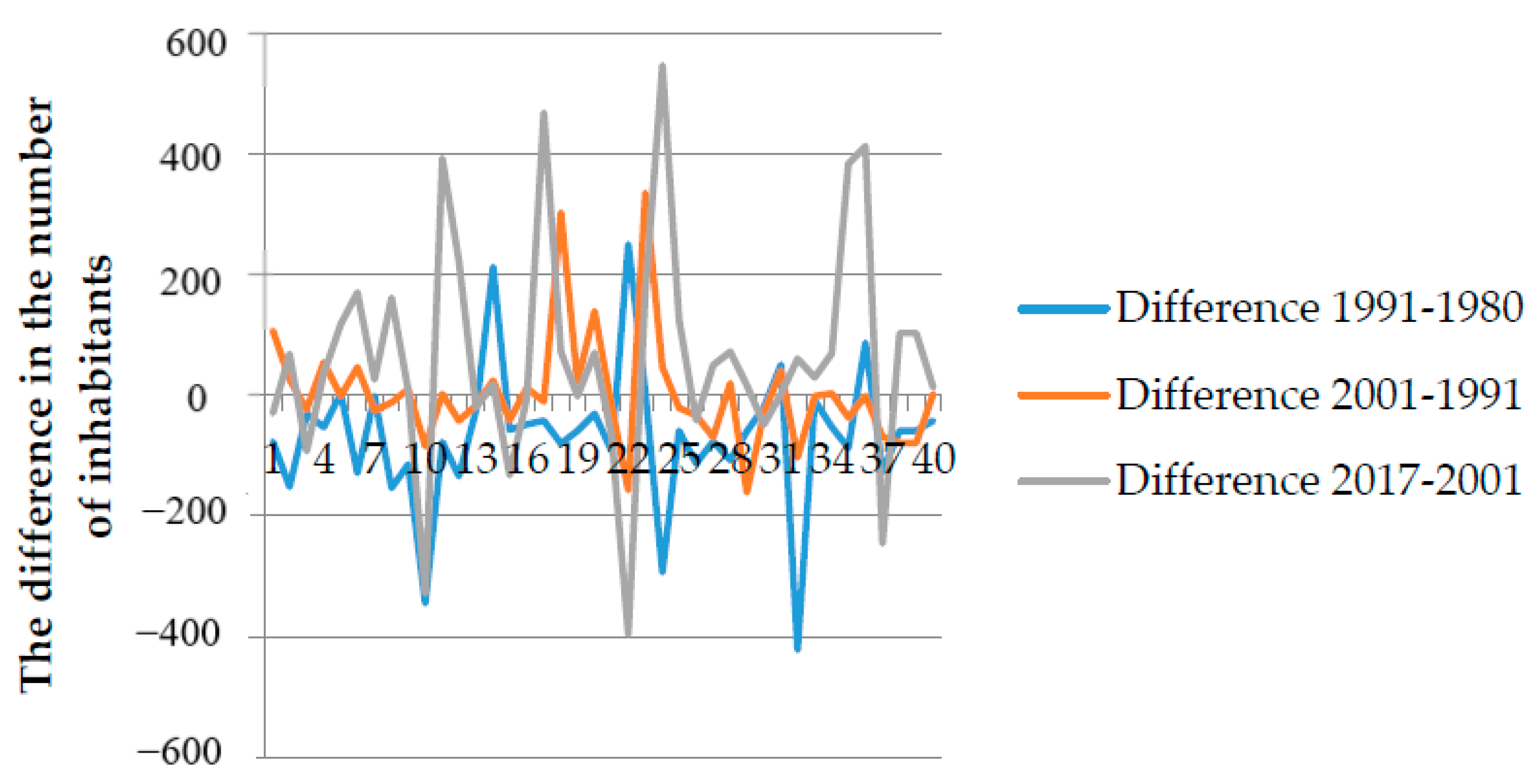
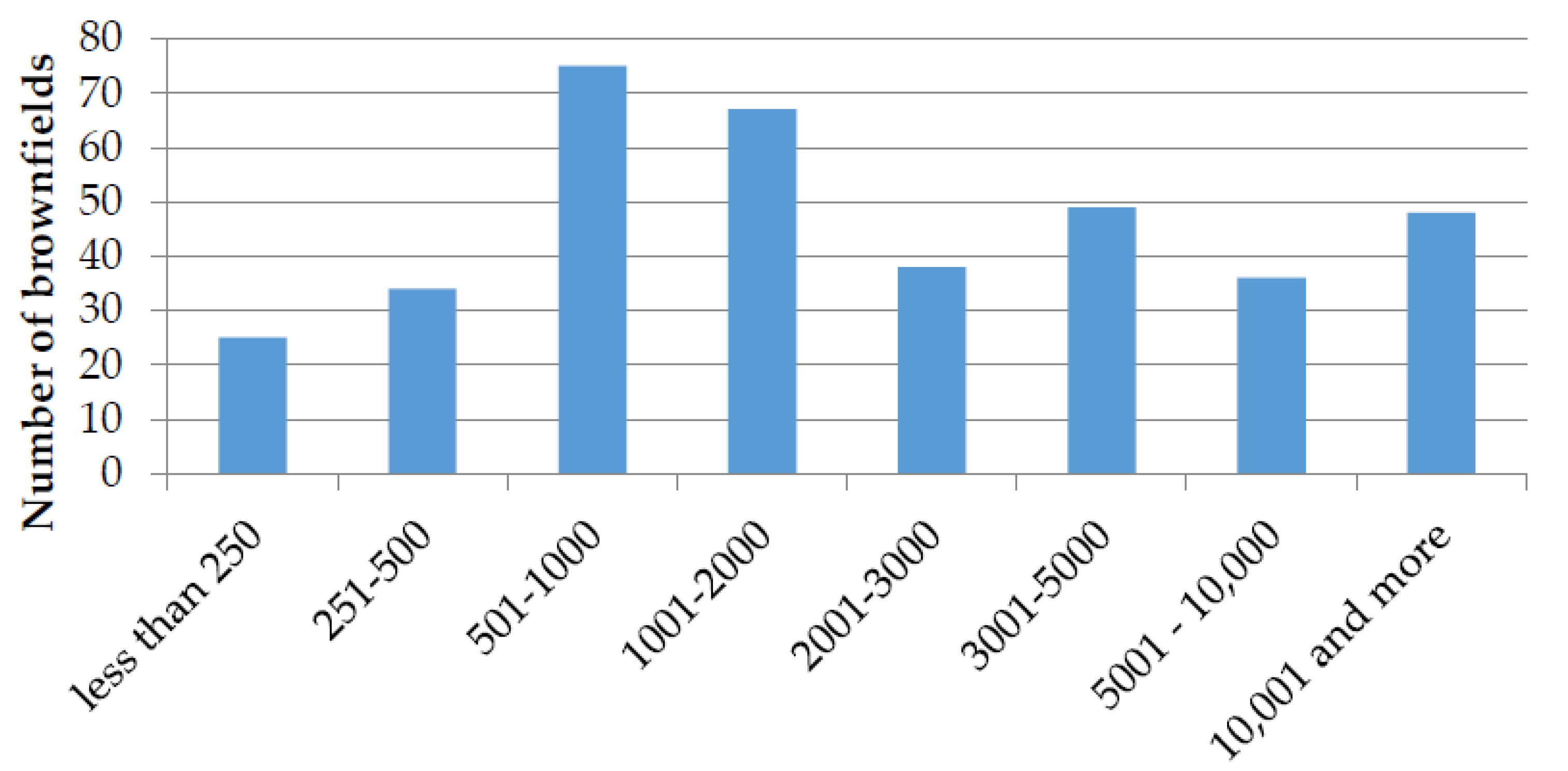
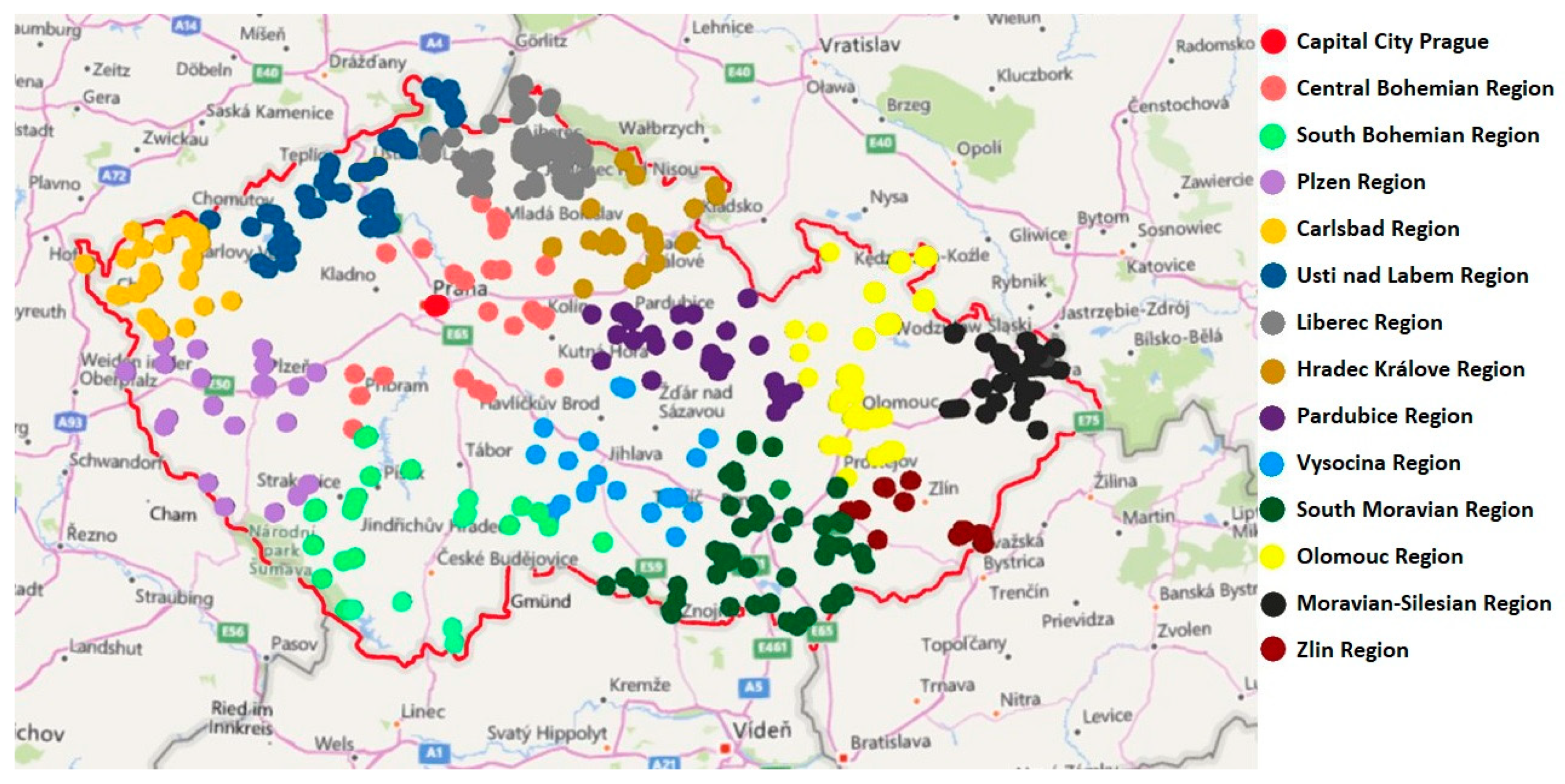
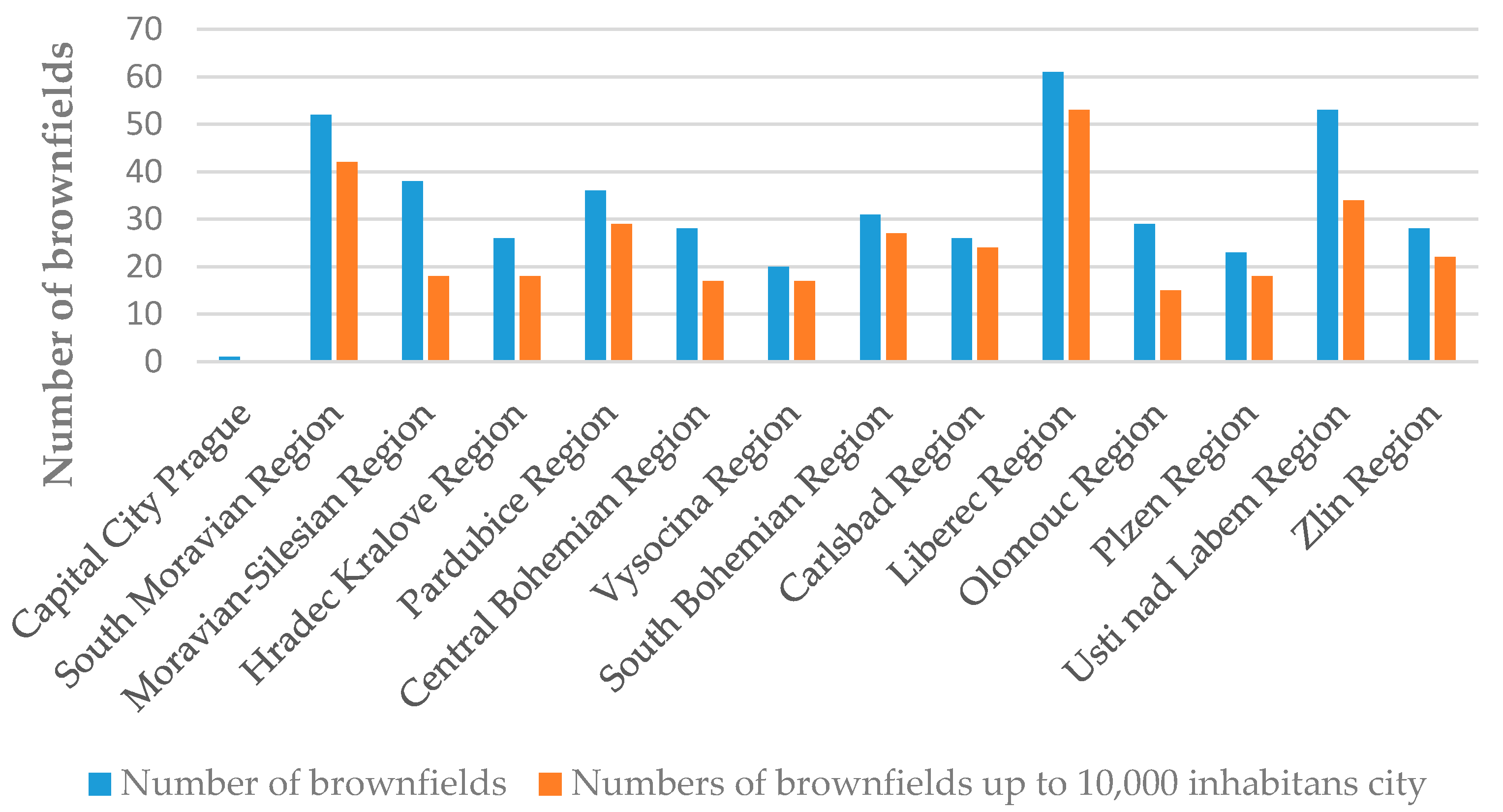
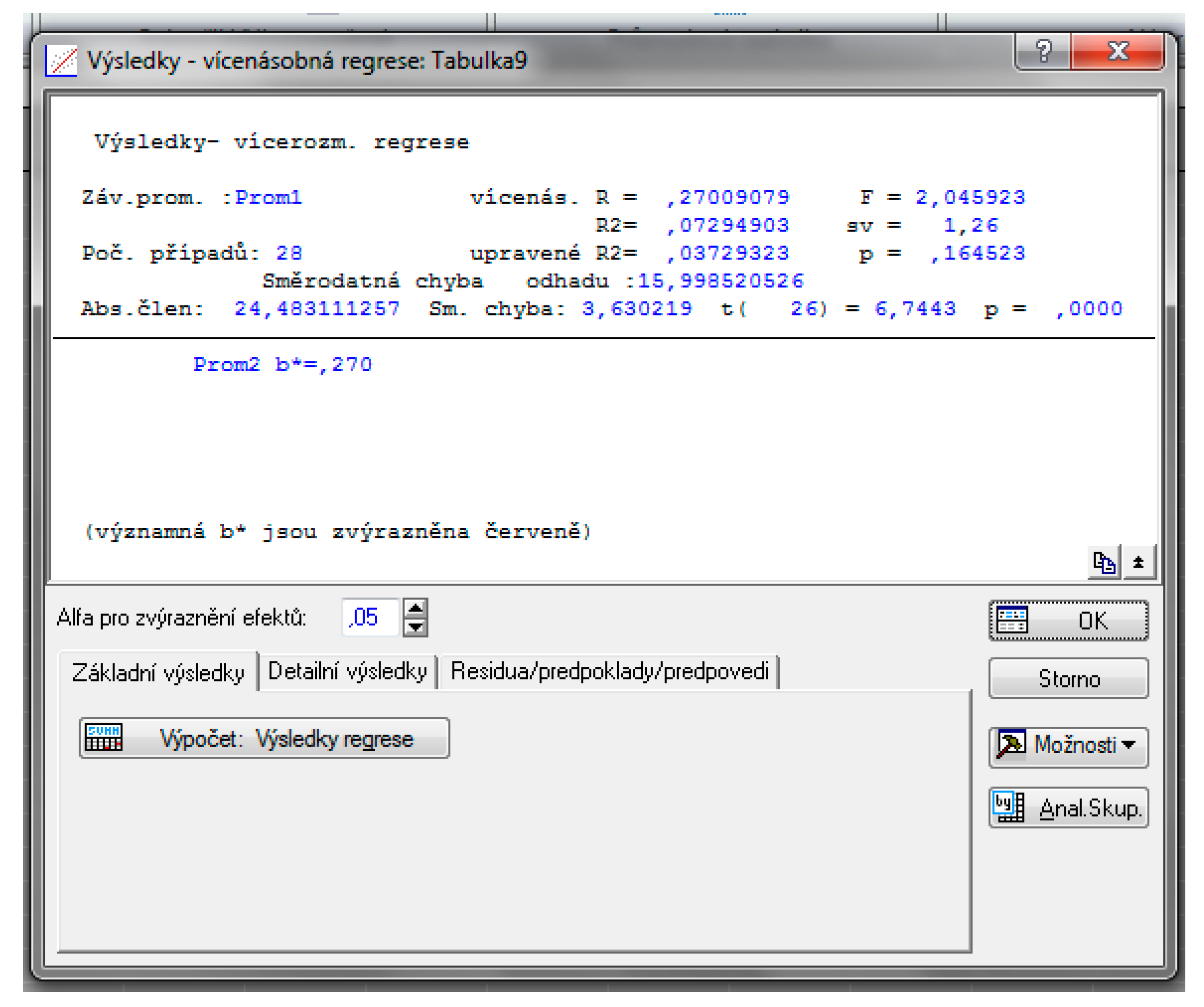
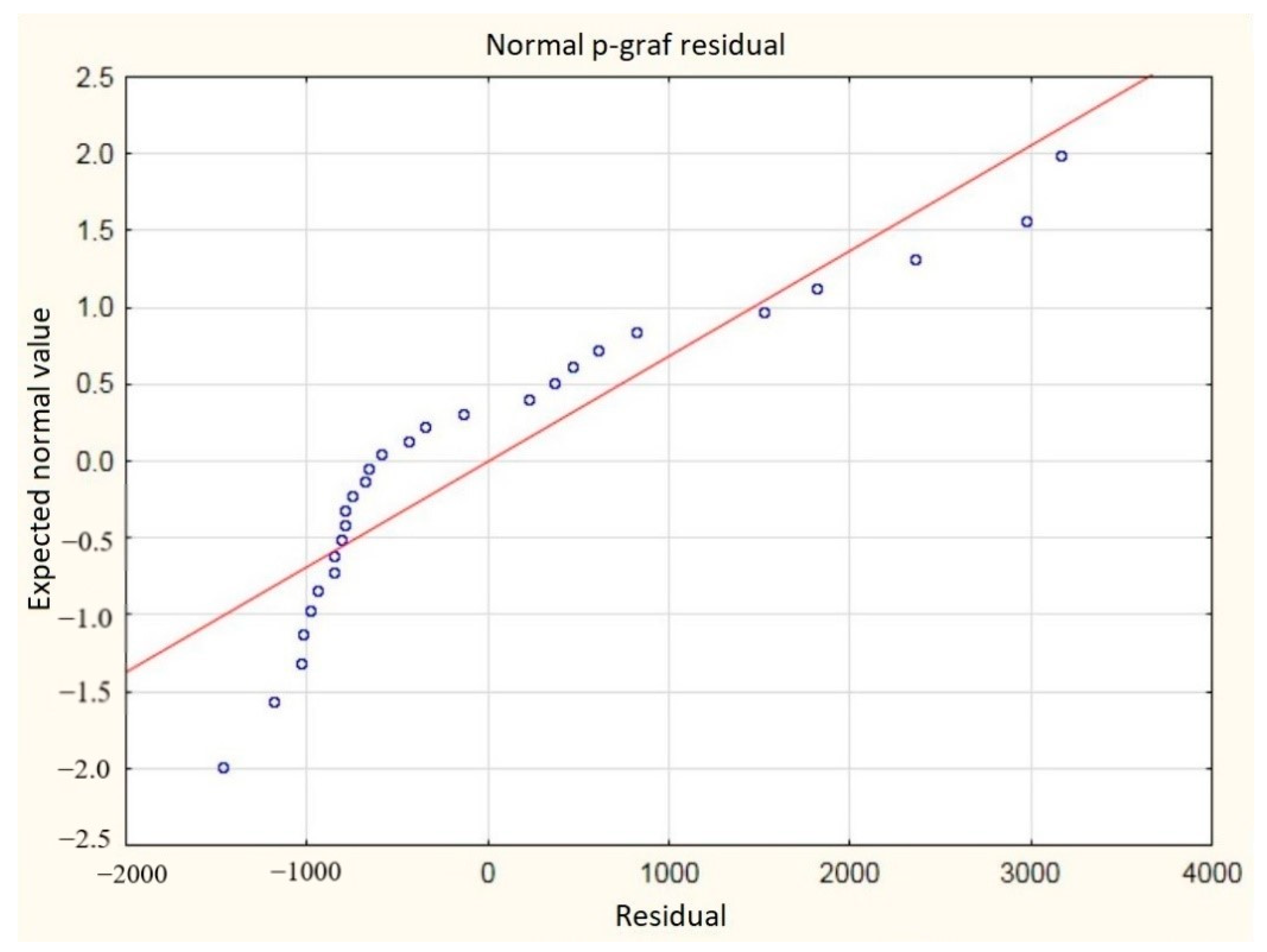
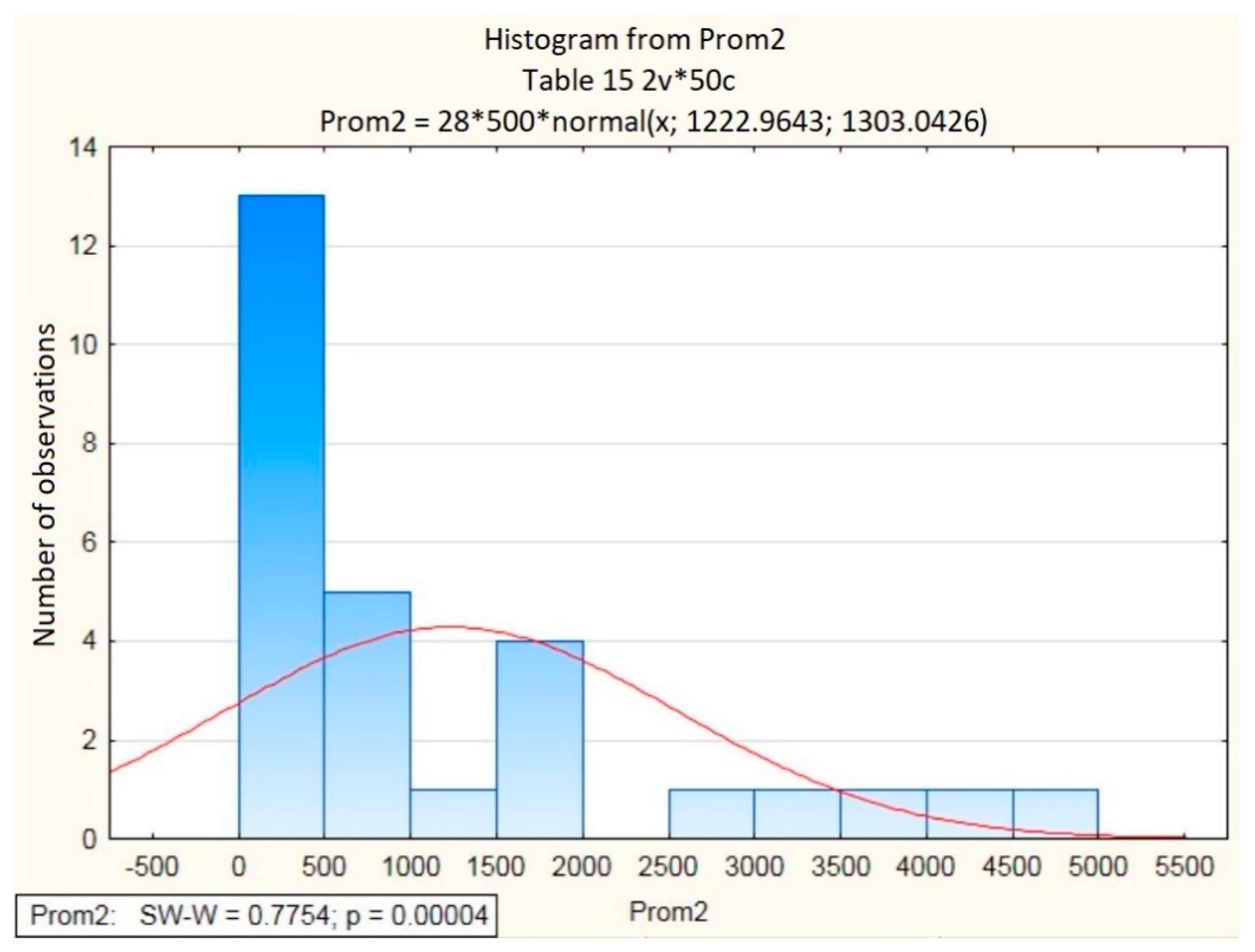
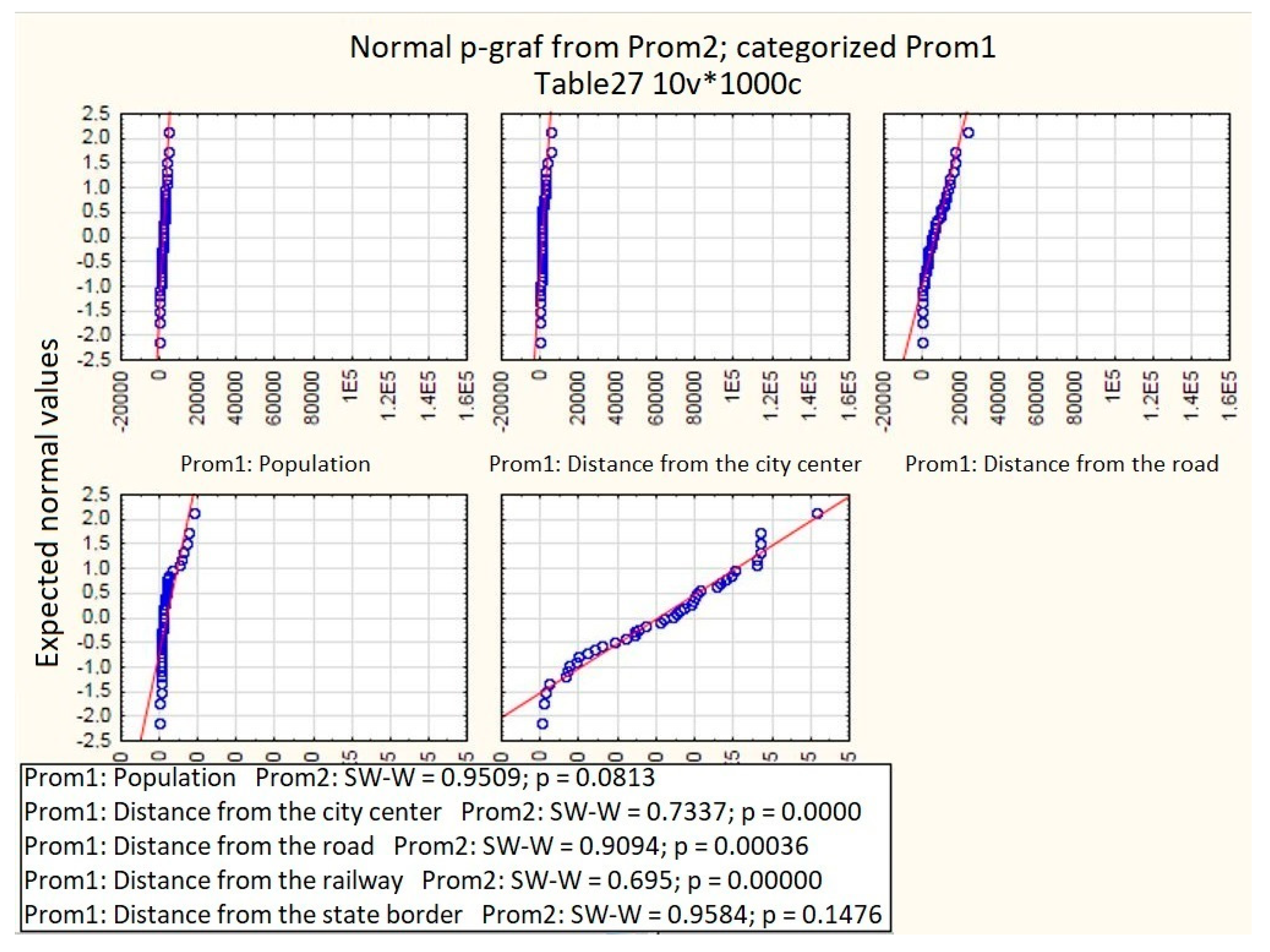
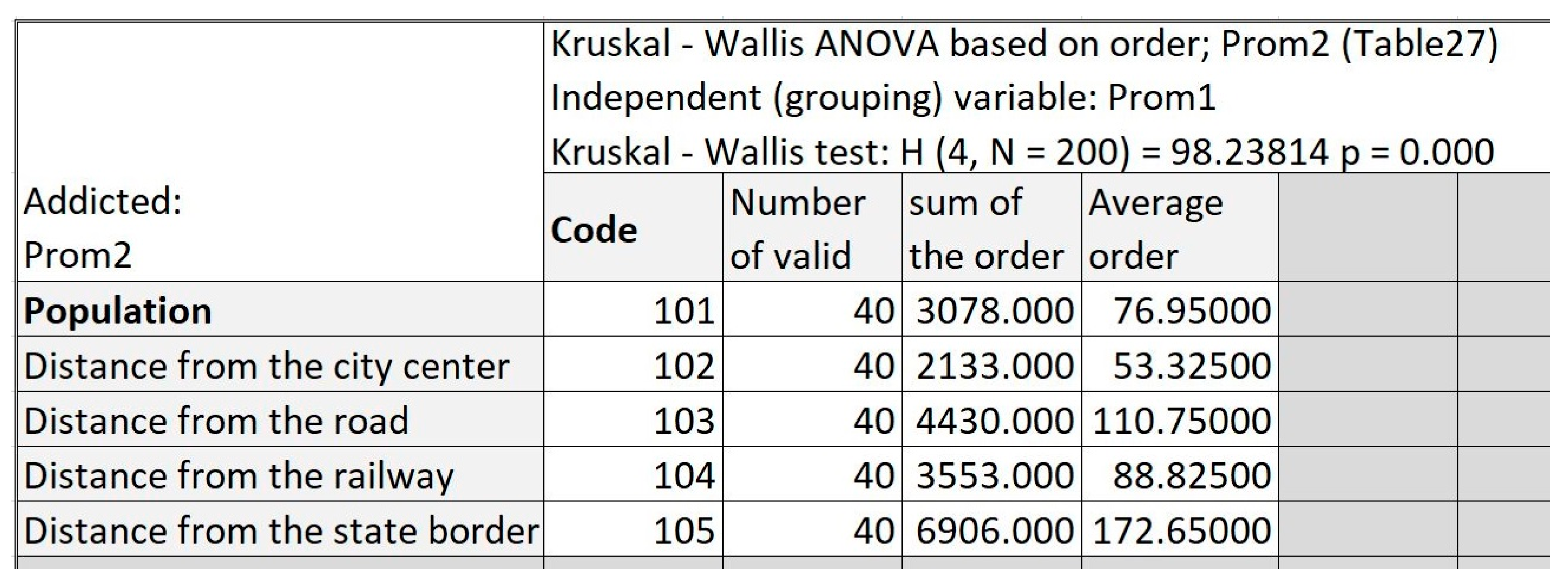
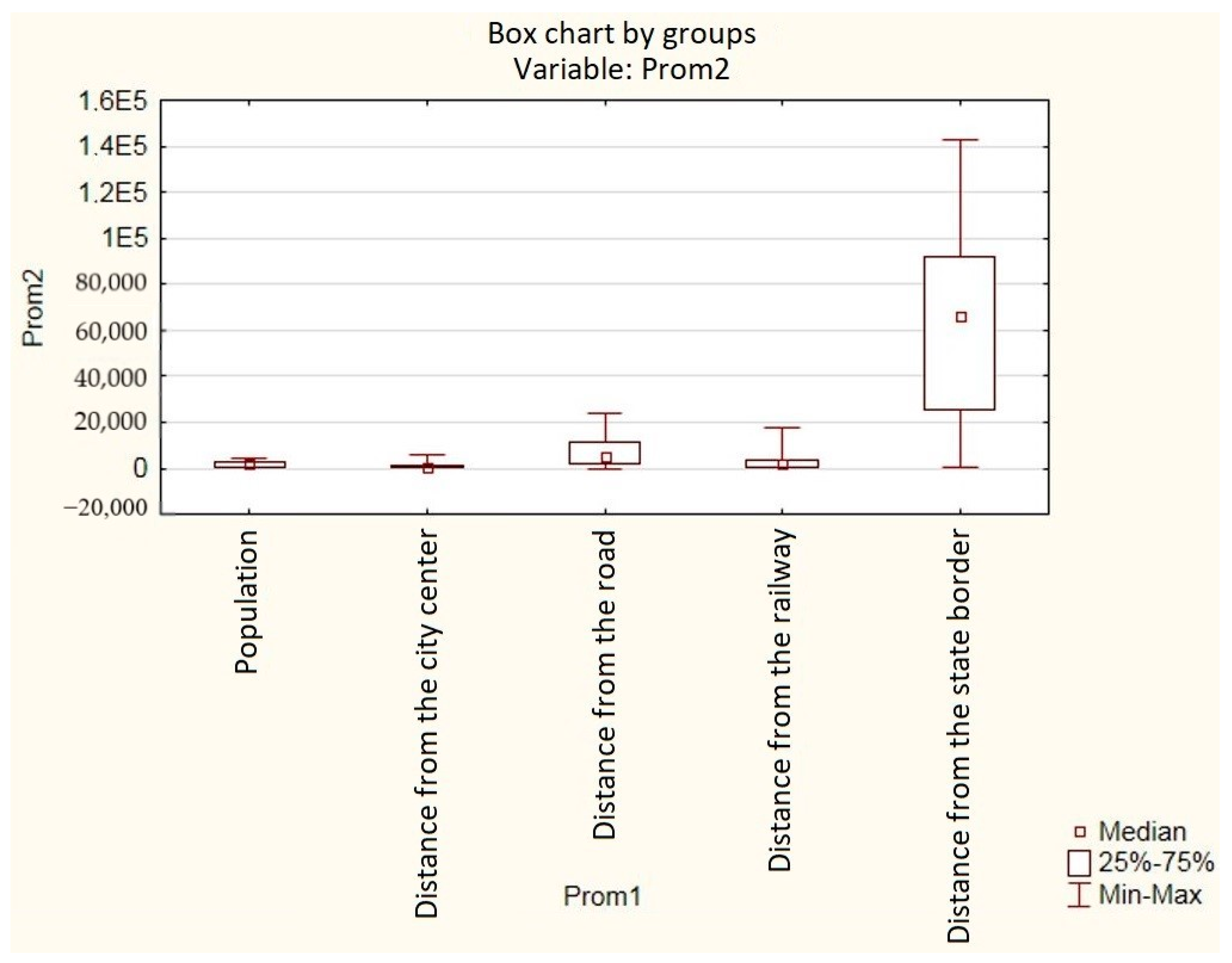
| A: Number of Inhabitants—Year 2001 | B: Number of Inhabitants—Year 2017 | Difference [A−B] | District | Cadaster | Cadaster Area [m2] | Settled Area [m2] | Number of Buildings | Name | Area [ha] | Usage | Ownership | GPS | Past Usage |
|---|---|---|---|---|---|---|---|---|---|---|---|---|---|
| 211 | 2811 | 2600 | Kroměříž | Blišice (Koryčany) | 3,783,736 | 63,988 | 160 | Farma Blišice | 0.81 | partially abandoned | private | 49°7′24.62″ N, 17°9′41.37″ E | agricultural |
| 4768 | 4369 | −399 | Uherské Hradiště | Bojkovice | 18,358,640 | 455,667 | 1422 | Statek Bojkovice | 6.42 | partially abandoned | private | 49°2′30.12″ N, 17°47′16.44″ E | agricultural |
| 6091 | 5574 | −517 | Zlín | Brumov | 21,496,397 | 290,959 | 1056 | Škola Brumov | 0.89 | abandoned | public | 49°5′10.78″ N, 18°1′28.91″ E | education |
| 6091 | 5574 | −517 | Zlín | Brumov | 21,496,397 | 290,959 | 1056 | Pivovar Brumov | 4.96 | abandoned | private | 49°5′26.41″ N, 18°1′12.79″ E | industrial |
| 363 | 371 | 8 | Kroměříž | Brusné, Slavkov pod Hostýnem | 8,170,444 | 64,974 | 248 | Farma Brusné-Slavkov | 3.38 | partially abandoned | combination | 49°22′7.44″ N, 17°40′10.14″ E | agricultural |
| 2448 | 2445 | −3 | Uherské Hradiště | Buchlovice | 31,961,913 | 465,202 | 1438 | Farma Buchlovice | 6.31 | partially abandoned | combination | 49°4′46.83″ N, 17°20′59.19″ E | agricultural |
| 226 | 180 | −46 | Kroměříž | Cetechovice | 7,486,341 | 67,184 | 168 | Farma Cetechovice | 1.26 | partially abandoned | private | 49°10′33.81″ N, 17°15′50.57″ E | agricultural |
| 226 | 180 | −46 | Kroměříž | Cetechovice | 7,486,341 | 67,184 | 168 | Sýpka Cetechovice | 1.3 | abandoned | private | 49°10′26.24″ N, 17°15′43.47″ E | agricultural |
| 316 | 370 | 54 | Zlín | Divnice, Lipová | 7,235,337 | 152,095 | 331 | Průmyslový areál Slavičín | 110 | partially abandoned | private | 49°6′4.99″ N, 17°54′23.09″ E | industrial |
| 316 | 370 | 54 | Zlín | Divnice | 7,235,337 | 152,095 | 331 | Vojenský areál Divnice | 7.48 | partially abandoned | combination | 49°5′40.63″ N, 17°54′25.76″ E | military |
| Result (Product of Weights) | Sequence |
|---|---|
| 2.87466 × 10−13 | 1 |
| 1.84188 × 10−10 | 5 |
| 9.01057 × 10−11 | 4 |
| 3.18294 × 10−12 | 2 |
| 1.95001 × 10−11 | 3 |
| Type of Ownership | Up to 20 Years | 20–40 Years | Over 40 Years | Sum of Frequencies ni |
|---|---|---|---|---|
| Private | 9 | 10 | 2 | 21 |
| Public | 3 | 2 | 0 | 5 |
| Ecclesiastical | 0 | 0 | 2 | 2 |
| Sums of frequencies nj | 12 | 12 | 4 | 28 |
| Type of Ownership | Up to 20 Years | 20–40 Years | Over 40 Years | Sum of Frequencies ni |
|---|---|---|---|---|
| Private | 9 | 9 | 3 | 21 |
| Public | 2.14 | 2.14 | 0.71 | 5 |
| Ecclesiastical | 0.86 | 0.86 | 0.29 | 2 |
| Sums of frequencies nj | 12 | 12 | 4 | 28 |
Publisher’s Note: MDPI stays neutral with regard to jurisdictional claims in published maps and institutional affiliations. |
© 2021 by the authors. Licensee MDPI, Basel, Switzerland. This article is an open access article distributed under the terms and conditions of the Creative Commons Attribution (CC BY) license (http://creativecommons.org/licenses/by/4.0/).
Share and Cite
Szeligova, N.; Teichmann, M.; Kuda, F. Research of the Disparities in the Process of Revitalization of Brownfields in Small Towns and Cities. Sustainability 2021, 13, 1232. https://doi.org/10.3390/su13031232
Szeligova N, Teichmann M, Kuda F. Research of the Disparities in the Process of Revitalization of Brownfields in Small Towns and Cities. Sustainability. 2021; 13(3):1232. https://doi.org/10.3390/su13031232
Chicago/Turabian StyleSzeligova, Natalie, Marek Teichmann, and Frantisek Kuda. 2021. "Research of the Disparities in the Process of Revitalization of Brownfields in Small Towns and Cities" Sustainability 13, no. 3: 1232. https://doi.org/10.3390/su13031232
APA StyleSzeligova, N., Teichmann, M., & Kuda, F. (2021). Research of the Disparities in the Process of Revitalization of Brownfields in Small Towns and Cities. Sustainability, 13(3), 1232. https://doi.org/10.3390/su13031232






